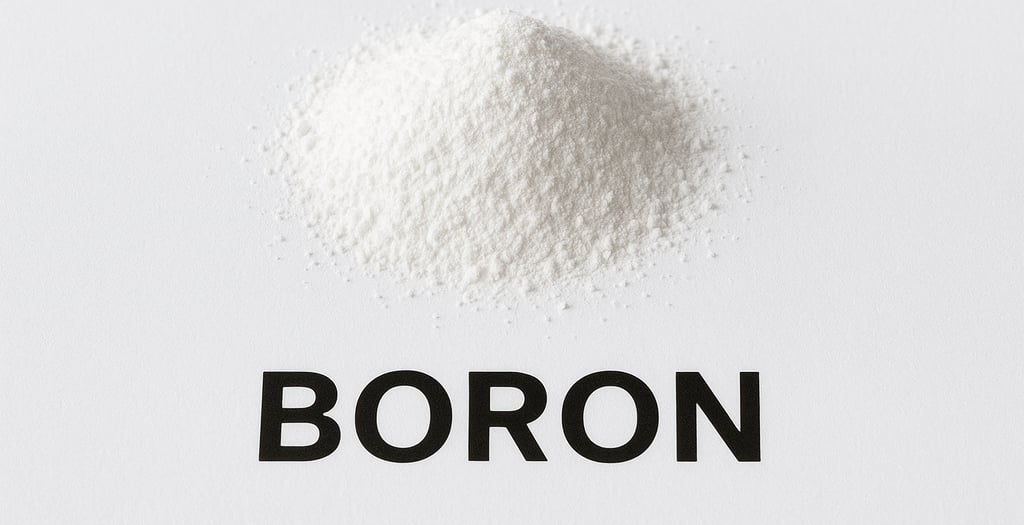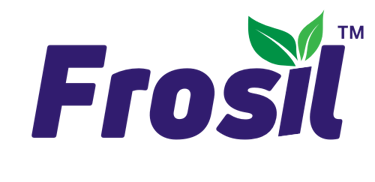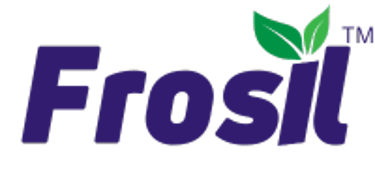Boron: Uses, Applications, and Advantages of Boron Available Fertilizers
Boron fertilizers have garnered significant attention in the agricultural sector due to their numerous benefits for crop production. One of the primary advantages of boron fertilizers is their ability to improve crop yield.
FERTILIZER & NUTRIENT MANAGEMENT
8/31/20257 min read


Introduction to Boron in Agriculture
Boron is an essential micronutrient that plays a crucial role in the growth and development of plants. Although required in smaller quantities compared to macronutrients, boron is vital for various physiological processes. It significantly contributes to cellular function, impacting plant health and crop yield. Primarily, boron aids in the development of the plant cell wall and is integral to the formation of reproductive structures, including flowers and seeds. This direct correlation between boron availability and reproductive health underscores its importance in agricultural practices.
The role of boron goes beyond just reproductive health; it influences several metabolic processes, including the transport of sugars and the synthesis of nucleic acids. Adequate levels of boron are essential for effective nutrient uptake, contributing to overall plant vitality. However, many agricultural soils exhibit boron deficiencies, which can lead to stunted growth, poor flowering, and reduced fruit set. These deficiencies are often a consequence of leaching, microbial activity, or inherent soil characteristics, particularly in highly sandy or alkaline soils.
Boron deficiency manifests in various symptoms, such as necrosis of leaf tips, reduced growth rates, and, in severe cases, complete crop failure. Therefore, understanding the significance of boron in agriculture is paramount for both crop management and soil health. With the increasing pressures of global food production, ensuring that crops have adequate access to this vital micronutrient is fundamental. Fertilizers enriched with boron can address these deficiencies effectively, thus enhancing productive agricultural practices. By focusing on proper boron management, farmers can unlock the full potential of their crops, leading to better yields and improved food security.
Types of Boron Available Fertilizers
Boron fertilizers play a critical role in improving soil fertility and enhancing crop yields. They can be broadly categorized into two main types: inorganic and organic boron fertilizers, each offering unique properties and application methods suitable for various agricultural practices.
Inorganic boron fertilizers primarily include products like borax and solubor. Borax, chemically known as sodium tetraborate (Na2B4O7·10H2O), is widely utilized due to its high solubility in water, which facilitates the quick availability of boron to plants. It is typically applied in the mineral form, either through soil incorporation or as a foliar spray, making it versatile for different crop types. Solubor, on the other hand, is a refined form of boron - comprising sodium borate and notable for its excellent solubility in water. It is often used at lower rates compared to other boron fertilizers since it has a higher purity level, ensuring effective delivery of boron to crops.
Organic boron fertilizers, while less common, are gaining traction due to the growing demand for sustainable agriculture. These include products derived from natural sources, such as seaweed extracts or other organic matter that contain boron in small quantities. Organic options not only provide boron but also contribute to soil health by improving microbial activity and soil structure. The slower release of nutrients makes them suitable for long-term soil fertility management.
When selecting a boron fertilizer, it is essential to consider several factors, such as the specific crop requirements, soil conditions, and environmental impact. Inorganic fertilizers tend to provide immediate results, while organic options may enhance soil ecosystems over time. Assessing the needs of the plants and the existing nutrient levels in the soil will aid in determining the most suitable boron fertilizer for effective application.
Benefits of Boron Fertilizers for Crop Production
Improves Flowering & Fruit Set – Essential for pollination and seed development.
Enhances Root Growth – Stimulates stronger root systems for better nutrient uptake.
Boosts Sugar Transport – Helps in carbohydrate movement, improving fruit quality.
Strengthens Cell Walls – Increases crop resistance against diseases and stresses.
Reduces Flower & Fruit Drop – Supports uniform fruiting and higher yield.
Improves Quality – Enhances size, color, taste, and storage life of produce.
Prevents Deficiency Symptoms – Avoids hollow stems, poor fruit setting, and deformation.
Boron fertilizers have garnered significant attention in the agricultural sector due to their numerous benefits for crop production. One of the primary advantages of boron fertilizers is their ability to improve crop yield. Boron is essential for various physiological processes in plants, including cell division, elongation, and the formation of flowers and fruits. Adequate levels of boron in the soil can lead to robust plant growth and, subsequently, an increase in both the quantity and quality of agricultural output.
Furthermore, incorporating boron fertilizers can enhance the quality of the crops produced. Boron plays a critical role in the synthesis of sugars and carbohydrates, which are vital for plant health. A well-balanced supply of boron not only improves the size and appearance of fruits and vegetables but also elevates their nutritional content. This, in turn, meets the growing demand for high-quality produce in health-conscious markets.
Another significant benefit of boron fertilizers is their capacity to prevent various plant disorders, particularly those related to calcium deficiency. One of the common issues in crops is the development of boron deficiency symptoms, which can manifest as blossom end rot in tomatoes and other fruits. A consistent application of boron fertilizers can mitigate these disorders, contributing to healthier plants and reducing losses due to disease and pests.
Moreover, boron facilitates better nutrient uptake, serving as a crucial element for nutrient mobilization within plants. This enhanced uptake enables plants to utilize other essential nutrients more efficiently, thereby supporting overall agricultural sustainability. Over time, the responsible use of boron fertilizers can lead to improved soil health, promoting better growth conditions not only for current crops but also for future generations. Therefore, the strategic application of boron fertilizers serves to bolster productivity while ensuring the long-term viability of farming practices.
Application Methods of Boron Fertilizers
Soil Application
Use Borax / Boronated Fertilizers.
Apply 1–2 kg Boron/acre (depending on soil test).
Foliar Spray
0.2% – 0.3% Boric Acid or Boron solution.
Spray during flowering & fruit set stages.
Fertigation
Apply water-soluble Boron fertilizers through drip irrigation.
Seed Treatment
Treat seeds with Boron solution to improve germination & early growth,
Best Time to Apply
Before flowering, at fruit set, and during critical growth stages.
Always apply based on soil test reports to avoid toxicity.
Boron is an essential micronutrient that has a significant impact on plant growth and development. To maximize the benefits of boron supplementation, various application methods can be utilized. The three primary methods are soil application, foliar spraying, and fertigation, each with its advantages and best practices.
Soil application involves incorporating boron fertilizers directly into the soil, allowing plants to absorb the nutrient through their root systems. This method is particularly effective in areas where boron deficiency is prevalent. It is crucial to assess soil conditions before application, as excessive boron can lead to toxicity. Optimal timing for soil application is early in the growing season, allowing plants to access the nutrient during critical growth phases. Dosage should be determined based on soil tests to ensure that it meets the specific needs of the crop.
Foliar spraying is another popular method that entails applying boron fertilizers directly onto the leaves of the plants. This technique can lead to quicker absorption and rapid corrective action in cases of boron deficiency. It is most effective during periods of active growth, particularly when plants are flowering or setting fruit. The recommended concentration of boron for foliar applications typically ranges from 0.1% to 0.5%, and it is advisable to conduct a test on a small area before full-scale application to avoid phytotoxicity.
Fertigation, which combines fertilization with irrigation, is a modern approach that allows for controlled delivery of boron to plants. This method ensures even distribution and is particularly beneficial for crops grown in high-demand environments. Timing is crucial with fertigation; it is best to align applications with specific growth stages, especially during peak nutrient uptake periods. Regular monitoring of both soil moisture and boron levels is essential to achieve optimal results and prevent deficiencies.
Challenges and Considerations in Boron Fertilizer Use
The application of boron fertilizers presents several challenges and considerations that must be carefully managed to ensure optimal crop health and productivity. One of the primary concerns with boron application is the risk of boron toxicity. Boron is an essential micronutrient for plants, playing a critical role in cell wall formation and reproductive development. However, excessive boron levels can be detrimental, leading to stunted growth, leaf decay, and ultimately reduced crop yields. It is crucial for farmers to be aware of the boron tolerance levels of specific crops, as sensitivity can vary significantly among different species.
Another important factor to consider is the necessity of thorough soil testing prior to boron fertilizer application. Soil tests provide vital insights into the existing nutrient levels, including boron concentrations. By analyzing soil conditions, farmers can make informed decisions on whether boron supplementation is needed, and if so, in what quantity. This step not only aids in preventing boron toxicity but also contributes to achieving a balanced nutrient profile in the soil, leading to improved crop viability and soil health.
Furthermore, understanding the specific boron requirements of various crops is essential for effective fertilizer management. Different plants have differing responses to boron, which necessitates tailored application strategies to meet individual species’ needs. Some crops may require higher levels of boron to thrive, while others may respond negatively to additional boron inputs. Therefore, a comprehensive approach that includes crop rotation practices, monitoring plant health, and adapting fertilizer application according to observed outcomes is advisable.
In conclusion, while boron fertilizers can significantly enhance agricultural productivity, careful management is paramount to mitigate the risks of toxicity and ensure that crop-specific requirements are met efficiently.
Conclusion: The Future of Boron in Sustainable Agriculture
As we have explored throughout this blog post, boron plays a critical role in enhancing crop productivity and overall agricultural health. Its applications in various forms of fertilizers provide essential nutrients that aid in plant development, mitigate deficiency symptoms, and promote better yields. Boron fertilizers are particularly important as they improve the absorption of other nutrients, thus ensuring that crops remain healthy and efficient in nutrient utilization. This multifunctional property positions boron as a vital element in modern agricultural practices.
Looking ahead, the future of boron in sustainable agriculture appears promising. With ongoing advancements in fertilizer technology, the efficiency and effectiveness of boron applications are set to improve significantly. Innovations such as controlled-release formulations and precision application techniques are emerging, allowing for more targeted consumption of this micronutrient. These developments not only optimize resource usage but also minimize environmental impact, aligning with the principles of eco-friendly farming.
The importance of micronutrients, including boron, cannot be overstated in the context of sustainable agriculture. As farmers and agronomists increasingly recognize the pivotal role that these elements play in enhancing growth, productivity, and resilience, they will likely adopt more comprehensive nutrient management strategies. This shift is crucial in addressing global food security concerns while maintaining environmental sustainability.
In conclusion, the integration of boron fertilizers into sustainable agricultural practices provides a pathway for improving crop yields and soil health. Continued research and development in this area will be essential for unlocking the full potential of boron, ensuring that it contributes positively to both agricultural productivity and environmental stewardship in the future.
You May Like To Read "Home Terrace Farming: Transform Your Space and Mind"


"Boosting Crop Growth With Nature's Power"
Contact Us:
E Mail: support@frosil.com
Customer Care: +91 8329592991
FROSIL © 2025. All rights reserved.


'Frosil' is a fertilizer manufacturer committed to enhancing soil health and crop yields. We provide high-quality, eco-friendly products that support sustainable agriculture and help farmers achieve optimal results.
Registered Office: Gat No.96, Near Krushnai Hospital, Tandali. Tal- Shirur, Dist- Pune.
